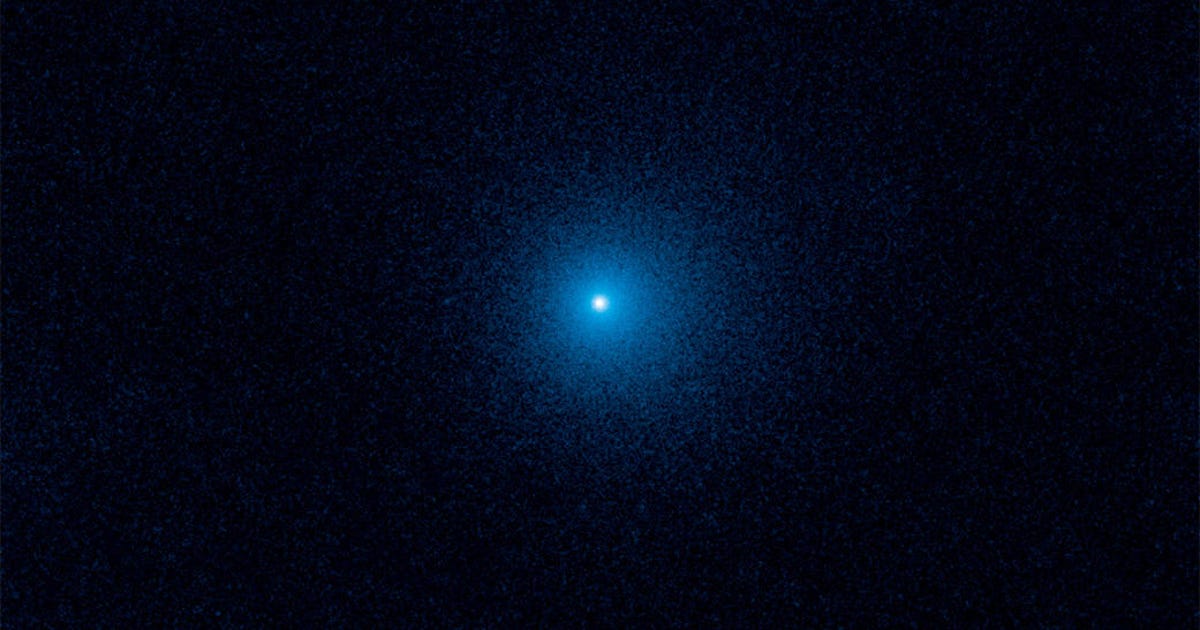How to See the Giant Comet Flying by Earth Soon
Five years ago, the Hubble Space Telescope spotted a large comet at the farthest distance ever, as it was approaching the sun from way out between the orbits of Saturn and Uranus. Now, that giant space snowball is coming in for its closest pass by Earth in just a few weeks.
Comet C/2017 K2 will be at its nearest point to us on its current swing through the inner solar system on July 14. Even at its closest, however, it will still be farther away from us than the average distance between Earth and Mars. This will likely make it difficult to see the comet without at least a small telescope, despite its substantial stature.
There’s a significant amount of uncertainty at this point around just how big the comet’s nucleus is, according to NASA solar system ambassador Eddie Irrizarry and Kelly Kizer Whitt in EarthSky, with different observations suggesting a range between 11 and 100 miles (18 and 161 kilometers) wide. That means C/2017 is somewhere between just legitimately big and among the handful of biggest comets discovered so far, like Hale-Bopp and Bernardinelli-Bernstein.
The size of the comet’s tail, or coma, is similarly massive and unclear. Early observations suggest the trail of dust and gases behind C/2017 K2 is anywhere between 81,000 and 500,000 miles (130,000 and 800,000 kilometers) across. So, somewhere between the width of one and six Jupiters — that’s an utterly epic trail.
To see the comet for yourself, you can look to public online observatories like the Virtual Telescope Project that are certain to host watch parties at some point. You can also get your hands on a telescope and start practicing spotting objects now using an app like Stellarium, which will also be able to point your lenses in the right direction as the comet comes closer.
After it passes us in July, C/2017 K2 will continue on toward perihelion, which is its closest pass by the sun, before heading back out toward deep space. Comets tend to behave unpredictably the closer they come to the sun. This one could suddenly become more active and brighter, or it could break apart and disappear from view altogether.
Whatever happens, this visit will likely be our only chance to get acquainted with this comet. Its orbit is so long that it won’t be back for a few million years.
For all the latest world News Click Here

